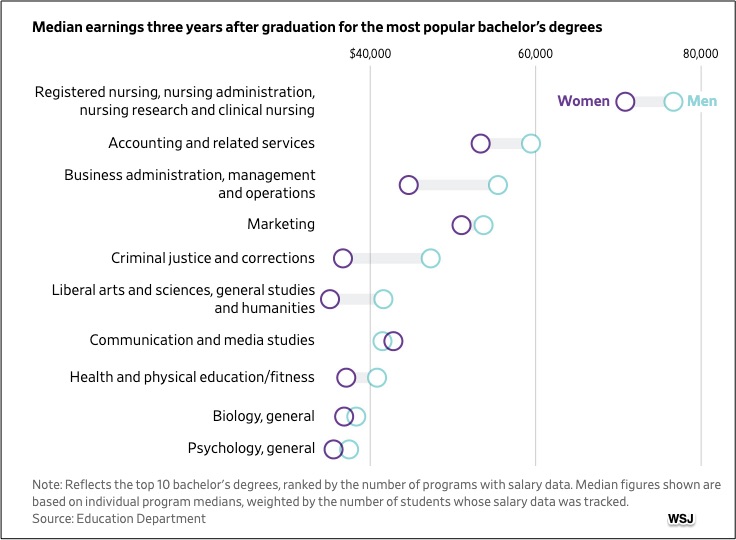The same school. The same degree program. The same job.
And yet women earned less.
The Gender Wage Gap
For almost 75 percent of the degree programs among 2016 and 2016 graduates from 2,000 or so universities, median male pay was more than their female classmates.
Just three years after leaving school, Georgetown male accounting grads earned 55 percent more than their female classmates. The comparable figures for the University of Michigan Law School was the men, $165,000 and the women, $120,000. Similarly, with University of Texas new dentists, the median male earned $140,000 while the women were at $103,000.
This table summarizes some of their gender wage gap data:

The Uber Pay Gap
Uber also has a pay gap. Although they are gender blind, the women earn 7% less per hour than the men.
The reasons relate to time, location, speed, and experience. Uber tells us that more men are willing to take the higher paying middle-of the-night jobs. In addition, the men drive more hours than the women, they select areas with higher surge spurts, and they have less wait time. Further boosting their pay, men have more customers per hour than women because they drive 2.2 percent faster. Then, by driving more hours and remaining longer at the firm, they accumulate the experience that helps them earn more. An experienced driver who completed 2500 trips will earn 14 percent more that a novice with 100 or fewer trips.
You can see that the reasons for the Uber gender pay gap differ from why women at accounting firms, law firms, and dentist groups earn less than the men. But that is my point. Many of the reasons will always be different. So, something else is going on.
Our Bottom Line: The Gender Wage Gap
Whether looking at a 2022 study in WSJ, at Uber, or a 2017 paper from Blau and Kahn at Cornell, the most up-to-date gender pay gap data present little that is new. After considerable narrowing during the 1980s, and then a slower move upward, women seem stalled.
Smiling, I might note that the pay difference between female and male economists is 1.4 percent. AND THE WOMEN EARN MORE!
My sources and more: This WSJ article had the most up-to-date data while the Uber facts are in this Freakonomics podcast and the paper on which it is based. However, if you want to hear my go-to person for wage gap wisdom, do listen to this Claudia Goldin interview. She says most of the problem is “greedy work.”
Thanks to MD Duran at Unsplash for our featured image.






